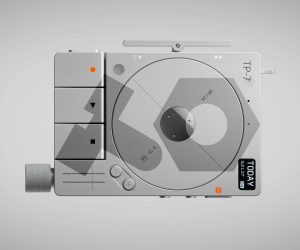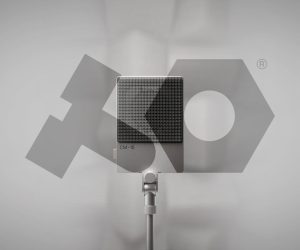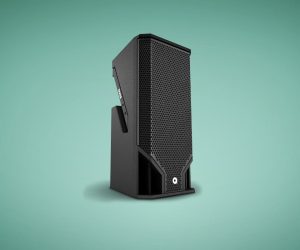
What About Un-Engineering?
Michael Carpenter switches on the conceptual portion of his creative brain and discusses how to make records without engineering... too much.
Text: Michael Carpenter
From the moment we commit ourselves, even in the most basic way, to furthering our skills as engineers and producers in the recording studio, we become fascinated with the sounds, techniques, equipment, and skills needed to make great sounding music. We soak up magazine articles, analyse ‘making of’ videos, have long discussions with our engineer comrades, and listen intently to records we love the sound of, trying to figure out how we might attain those sonic Holy Grails we picture in our mind. Along the way, we amass a huge amount of information about how to produce a wide array of sounds.
We also amass a wealth of experience through the process of trial and error, which we nonchalantly (and often subconsciously) file away into the back our ‘creative brain’. Do this long enough and it eventually starts to manifest in subliminal ways – in the confident way we carry ourselves in our professional endeavours, for instance. So while we all have to make records that sound ‘state-of-the-art’ once in a while, occasionally we’re allowed to switch off the competitive part of our engineering brains and immerse ourselves in a project based on instinct, colour, creativity and mood. On these projects we can allow ourselves to un-engineer.
Huh?
UN-ENGINEERING
Let me throw a few background concepts at you to start with. What records really ring your bells from a production and sonics point of view? Personally, I have great admiration for the slick, contemporary style of production, but often this style leaves me emotionally cold – it doesn’t really move me. Then I’ll hear something that hits me straight in the heart, which reminds me of why I wanted to make records in the first place.
I want to be able to convey emotion, character, style, and perhaps controversially in today’s markets, humanity!
When was the last time you heard something that really hit you, not from the point of view of: ‘gee, that sounds slick/tight/good’, but more in the sense of: ‘that sounds brave/bold/honest/unique’. Have a think about that while I carry on…
Lately I’ve been thinking a lot about the idea of making records that are bolder and courageous, and filled with character. This isn’t for every project mind you; there’s no point trying to force a unique production style onto a project that really just wants to sound like a well-engineered ‘regular’ production. If a project does come across your desk, however, that allows you to really dive into the content and search for a deeper production connection with the music, or has a more unique story to tell, it might offer you the opportunity to lean on your skills and experience to make a truly special artistic work.
Lately, in my infrequent ‘down time’ in the studio, I’ve been experimenting with a bunch of different engineering choices, mainly inspired by some important records I’ve been listening to over the last few years, that have delivered an emotional wallop to these jaded ears. These include concepts like: only stereo miking, using no compression, using only ambient mics, modifying the instruments to be recorded heavily before miking them, only putting mics where your ears are, only using a few mics, only using one mic, only using cheap and nasty mics, recording only with headphones as mics, and so on. I found myself reacting to these new versions of familiar sounds quite quickly, without labouring over the sounds at all. It allowed me to be decisive, even though I was dealing with unfamiliar techniques, and the results were almost always useable. Perhaps more importantly, they were interesting, compelling and filled with character. It certainly got me thinking…
‘What I need now is a project…’

THE PROJECT
As fate would have it, right in the middle of these sonic experiments, I was approached to produce an album for Townsville’s Kate Martin. After hearing her amazing demos, and referring heavily to her voluminous amount of reference discs, I realised this had the potential to be a very special project. When I finally met Kate, it quickly became apparent that she was interested in making a record that reflected her unique perspective on the world. She had no desire to sound like anyone, and was totally open to making this record in an organic, non-studio way.
Better still, she had faith in my ability to make it sound good enough, and responded strongly to the idea of the record feeling instinctive, honest and real. With this in mind, I knew we could produce the album in a reasonably unconventional way, from the initial guide tracks, through to recording and, eventually, mixing.
The songs had been demoed in Townsville in Logic, and I was warned ahead of time that there may be some elements we may want to use from the demos… maybe. Since I only run ProTools, I asked Chris Vallejo over at Linear Recordings to convert the original Logic sessions into rendered .wav files for me, so I could import them easily into the new ProTools sessions. The demos were quite extensive, but Kate had expressed a desire to re-record most elements. There were a few things working against us too, in that the demos appeared to have been done mostly without a click track, whereas we wanted to track all things here to a click. So initially there was a lot of importing and manual tempo and meter mapping.
I was organising and building the session file in a way that was entirely different to how I normally work. For example, we were often using the rhythmic colour instruments in the middle of a song, and some backing vocals throughout, but re-recording the foundation instruments and lead vocals. A fair bit of thought was put into how to keep the form and shape of the demos in their shell form, allowing us to build songs with the freedom of knowing we could get stuff back from the demos if we needed them. Psychologically, establishing this early was liberating to the project, and an important conceptual decision, that in hindsight helped establish an attitude of ‘don’t worry… it’ll work!’
SONG BUILDING
As many AT readers will know, often the ‘standard’ way to build a track is to start with drums and layer accordingly. But on day one of this project we quickly established the notion that we should feel comfortable recording anything we like in any order we want. This often meant we’d focus on the stuff we knew we wanted to have on certain tracks first, and then react to those defined elements. Often that meant Kate’s main rhythm guitars would go down reasonably early (and remain a focus throughout the album), usually followed by some of the more defined colour instruments, like piano, or hand percussion.
Recording the piano was an interesting example of how the engineering choices were made. We reacted more strongly to a rustic, less slick piano sound, so for most of the piano tracks, whomever was playing the piano would spend a little time working out the part, and when they were ready, whatever mic was ‘live’ in the room at the time would be nonchalantly put up to around head height, sometimes facing the piano, sometimes facing away, often in omni and at a distance of about three to four metres – usually wherever it happened to be at the time. The idea was to keep the sound as ‘in the room’ as possible, without bringing the instrument into focus too much. On occasions where the piano needed to be more of a feature, we’d make the choice to use the older, more broken down piano that we have outside in the common area at Love Hz. We’d just place a mic somewhere in the vicinity of the piano, and hope the planes didn’t fly over during the take!
As for vocals, we established a specific approach early on. On the first vocal takes, I put up the studio’s modified Bees Neez U47 clone. The artist thought it sounded too clear and slick. Kate has a great voice that sounded lovely in the room, so I knew it was just a matter of finding a mic she felt was giving her the appropriate tone. The next mic I went to was the Neumann TLM 170, mainly because it’s dark and cloudy, but still hi-fi enough. Kate immediately preferred the comparable grittiness of this mic, and the difference in her subsequent vocal approach was tangible. The TLM 170 was employed for almost all subsequent vocal duties. There was also a vocal or two done on an old AKG D125 dynamic mic that I’ve always thought was a compromised, midrange -heavy, average sounding microphone. Committing to this sound on that particular track put Kate into a certain vibe that helped her deliver the lyric effectively.
DRUMS TO ORDER
Rhythmically, this record was built around Kate’s rhythm guitars, often augmented with percussion of the regular kind (shakers, tambourines) and the irregular kind (brushes on a notepad, plastic toy tambourine, and looped version of one of Kate’s burps). When we did decide on drums, we’d put together the kit we needed using only the essential elements. This resulted in some unique combinations, and miking these constructions was always instinctive, usually with a mindset more focused on coverage than sonic integrity. Often this involved nothing more than a mono overhead, a kick drum mic placed a foot or so back, a crusty ribbon mic snuck in the centre of the kit (the ‘fun mic’), and possibly either a pair of cheap stereo ribbons or a stereo mic pointing somewhere towards the kit, or some combination of those elements. Speaking of which, the stereo mic – the underrated Studio Projects LSD2 – was another one of those ‘always plugged in’ mics that we often recorded regardless of where it happened to be in the room. I used this on a bunch of percussion and it worked a treat.
By far the most significant mic, however, was the one that was always live in the room –
the Audio-Technica AT4050… the Neumann TLM 170 and the Bees Neez U47 were also used regularly, but the AT4050 was king. I love having a multi-pattern mic in this situation; it means you’re always ready for anything. As an idea would come together, the Audio-Technica – plugged into my trusty UA M610 preamp and an 1176 – could be moved somewhere near where the source was projecting into the room. Whether it was cheesy old organ, finger clicks, gang BVs, more cowbell, a whole drum kit, toy piano, electric guitar, harmonies or anything else we thought of, we could just shove a mic near the source and be ready to go almost instantly, confident that the mic and signal chain would do the job. Often compression levels were set by sight, making sure the meter was moving just enough. Once we got into the swing of this process, the effect it had on us creatively was substantial, and we began to respond very clearly to the sounds we’d hear on playback. These sounds felt contextually perfect for the project, in that they usually had a sense of the room. A little compromised technically perhaps, but full of colour and vibe in performance. This instinctive approach to overdubs made up a large proportion of the record.
MIXING OR BALANCING?
One of the more interesting revelations of this un-engineering approach came at mix time, after the Townsville crew had headed home. Where mixing can often be the time where you really dive in and sculpt your tones and craft your soundscapes, on this occasion I found a lot of this work had already been done. By giving the important elements priority during the recording sessions (main rhythm elements, vocals, essential colours, then all the extra ear candy) we were clearly reacting to what was already recorded as we built the tracks. And as we were often overdubbing in the same room in which we were monitoring, we were regularly constructing our parts with a sense of the recorded space already in mind. So the player would often work out their part without headphones while interacting with the important foundation parts playing through the monitors. As we would listen back to an overdub, it would nearly always complement what was already there. And as Kate loved the sound of reverb on her voice, I was always refining reverb choices as she tracked her vocals, and during subsequent listening while we overdubbed.
So, while I normally like to strike a mix and start from scratch, in this case, the rough mixes were sounding so good it really just became a case of refining what was there. In all honesty, I probably spent a third of each mix just working on Kate’s vocal, getting rid of any unwanted mouth noises, and automating elements to make sure her vocal always remained the focus of the record. I tended to do this early in the mix process, refining and building each mix around her vocal, its ambience, and the main rhythmic element of her guitar or piano. In this context, I rarely thought about EQs and compressors, and just reacted with relatively transparent dynamics and tonal choices, to enhance and support the choices we’d already made.
NEVER TOO OLD TO LEARN
Wow. It feels so nice to have written an article about a good creative approach to making a record without relying on discussions of mic choices, compression ratios and EQ frequencies. I guess the idea behind this article is to get people to understand that by using your ears to listen to what the artist wants, and your creative mind to put together an approach that suits the artist’s needs, the engineering part is purely a means to an end. While I totally believe we did a great job producing this record, it’s clear that there’s no engineering on this record more important than the content, the performances or the songs themselves. On every project, regardless of the production aesthetic, that’s a critical thing to remind ourselves of.
While I totally believe we did a great job producing this record, it’s clear that there’s no engineering on this record more important than the content, the performances or the songs themselves.

















RESPONSES